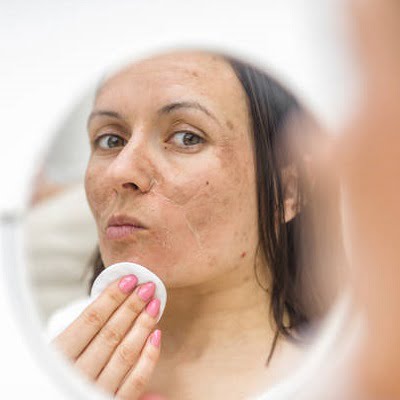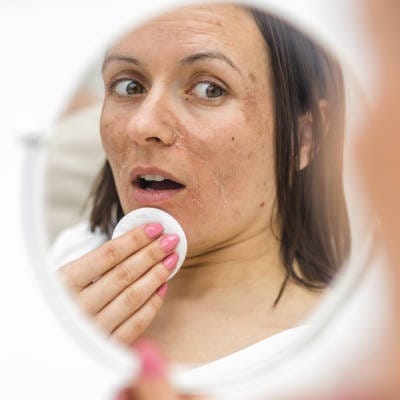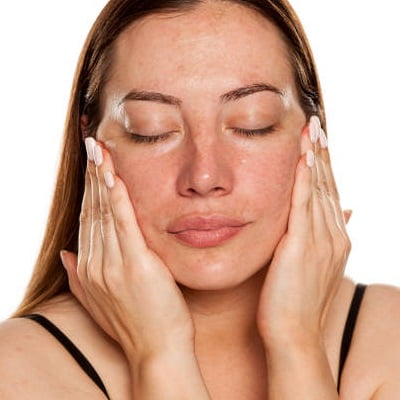
Melasma, often called “the mask of pregnancy,” is a common skin condition that causes brown or greyish-brown patches on the face, most commonly on the cheeks, forehead, nose, and upper lip. Fortunately, there are several effective melasma treatments in Islamabad are available.
In this blog, we will explore the top four treatment options to help individuals dealing with melasma regain confidence and achieve clearer, more even-toned skin.
Topical Creams and Serums:
Topical creams and serums are one of the first-line treatments for melasma in Islamabad and worldwide. These products contain active ingredients that reduce pigmentation and even skin tone. Some of the most commonly prescribed ingredients for melasma include hydroquinone, tretinoin, corticosteroids, and kojic acid.
- Hydroquinone: Hydroquinone is one of the most effective skin-lightening agents available. It works by inhibiting the production of melanin, the pigment responsible for the dark patches on the skin. In Islamabad, you can find hydroquinone-based creams over the counter in lower concentrations or through prescription in higher strengths.
- Tretinoin: Tretinoin, a vitamin A derivative, is often combined with hydroquinone to enhance its effects. Tretinoin helps to exfoliate the skin and improve the penetration of other active ingredients. It can be particularly beneficial for those with melasma when used under the guidance of a dermatologist.
- Kojic Acid: Kojic acid is a natural ingredient derived from mushrooms. It works by inhibiting melanin production and is considered a safer alternative to hydroquinone for some individuals. Kojic acid-based creams and serums are widely available in Islamabad’s skincare market.
While topical treatments can effectively treat melasma, they require patience and consistent application. It may take several weeks or even months to see noticeable results. Additionally, it’s essential to use sunscreen daily to protect the skin from further UV damage, which can exacerbate melasma.
Chemical Peels for Melasma:
Chemical peels are another popular melasma treatment option in Islamabad. During a chemical peel, a dermatologist applies a chemical solution to the skin, which causes the top layers of the skin to peel off. This process stimulates the growth of new, healthier skin cells and can help reduce the appearance of melasma.
Different types of chemical peels are available, and the choice of peel depends on the severity of the melasma and the individual’s skin type. Superficial peels, such as glycolic acid peels, are milder and require minimal downtime. In comparison, deeper peels like trichloroacetic acid peels may yield more significant results but may also involve a more extended recovery period.
Chemical peels should only be performed by trained professionals, as improper application can lead to complications such as scarring or further pigmentation issues. Your dermatologist in Islamabad will assess your skin and recommend the most suitable type and strength of chemical peel for your condition.
Laser Therapy for Melasma:
Laser therapy, or laser resurfacing, is a highly effective melasma treatment option that uses concentrated beams of light to target and break down melanin in the affected areas. This treatment benefits individuals with deep or stubborn melasma that hasn’t responded well to topical treatments or chemical peels.
There are different types of lasers used for melasma treatment, including:
- Q-switched lasers: These lasers emit short, high-intensity pulses of light that target melanin specifically. They effectively break down pigmentation without causing significant damage to the surrounding skin.
- Fractional lasers: Fractional laser treatments create tiny, controlled injuries in the skin, stimulating collagen production and encouraging the growth of new, evenly pigmented skin.
Laser therapy for melasma is usually performed by dermatologists or trained cosmetic surgeons. It may require multiple sessions for optimal results, and downtime can vary depending on the type of laser used. Following post-treatment care instructions is crucial, typically avoiding sun exposure and using gentle skincare products.
Microneedling for Melasma:
It, also known as collagen induction therapy, is a minimally invasive procedure that involves using a device with fine needles to create microscopic punctures on the skin’s surface. This process stimulates collagen production and allows for better absorption of topical treatments.
Microneedling can be an effective adjunctive therapy for melasma, especially when combined with serums containing skin-lightening agents like vitamin C or hyaluronic acid. The tiny channels created by microneedling enable these active ingredients to penetrate deeper into the skin, addressing pigmentation concerns at a cellular level.
When seeking microneedling treatment for melasma, choosing a reputable clinic with experienced practitioners who follow strict hygiene and safety protocols is essential. Multiple sessions may be required, spaced several weeks apart, to achieve optimal results.
All Summed Up!
Melasma is a challenging condition to manage, but the proper treatment approach can significantly improve its appearance and restore confidence. In Islamabad, Pakistan, individuals dealing with melasma can access various effective treatment options, including topical creams and serums, chemical peels, laser therapy, and microneedling.It’s crucial to consult with a board-certified dermatologist at SKN Cosmetic Clinic Islamabad before starting any melasma treatment. The treatment choice should be based on your skin type, melasma’s severity, and individual needs and preferences. Maintaining a diligent skincare routine that includes daily sun protection is essential to prevent melasma from recurring or worsening.



